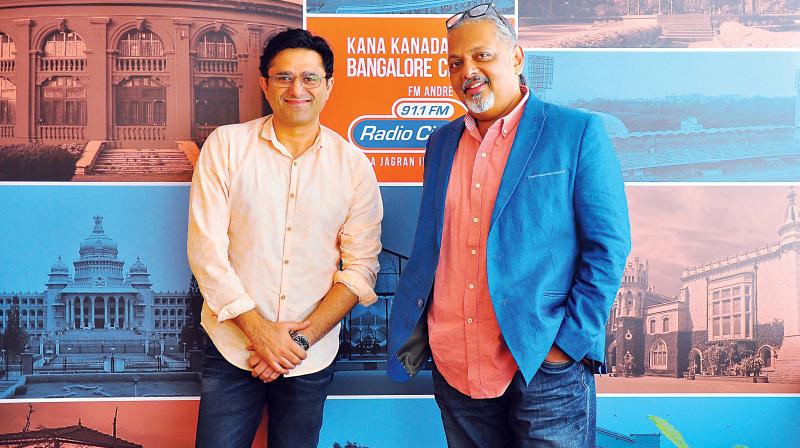News will be most trusted on radio, as it is apolitical: Radio City execs

Mr Abraham Thomas, CEO, Radio City, and Mr Kartik Kalla, executive vice-president and National Head of Programming, Radio City, came to the city to launch City Cine Awards-Kannada. They shared their views on the growth of radio, the competition the sector is facing from online streaming services and permission for radio stations to broadcast news.
Most cine award organisers claim that their selection procedure is transparent. How is Radio City Cine Awards - Kannada, going to be different?
Abraham: Here, listeners are the judge. There is no jury and the process is transparent. Every listener can listen to their favourite artistes and choose them. No other platform actually empowers the listeners.
Kartik: We have a good relationship with the movie industry. They launch their music at our radio stations. This is the biggest award across all platforms, only because of the participants we get. In Chennai, we have got over 70 lakh votes and we are going to Hyderabad next.
Is the radio industry fading away, as most advertisers are shifting focus to the digital medium?
Abraham: Radio is projected to be growing the fastest among all media. It is second only to digital and will grow at 15.6% in the coming five years. Radio is one medium where one can seamlessly integrate content with the commercial. Local advertisers, who include real estate, retail etc, advertise extensively, and even national advertisers who need local reach have to use the radio. Radio allows using different creatives for different mediums, which is not available with the television. We have properties that ride across multiple mediums. Listeners have taken the digital to a different level, while advertisers are yet to reach that level.
Kartik: There is a friend in radio and digital will never replace that friend. This medium has built a bond over the years. It can only complement the radio. Radio is live, whereas digital is not.
There was a sudden surge in radio stations after 2006? Did corporates see any profit?
Abraham: The first major spurt of radio happened in 2001 and radio stations surged in 2006 after phase II of licensing. In 2016, after phase III new licences were given. We are now in 39 cities. This is how radio has grown. Expansion of radio in that sense is controlled by the government, so with new licences radio stations too came up. It gives you local reach which is what the advertisers require. More expansion will take place after the availability of new licences.
Kartik: It is an independent potential of the medium and the synergies that the medium brings to the corporate house. For example with Jagran, there was print and digital and so there was a need of radio, so it happened. It is a 360-degree platform when it comes to group synergy and as an independent entity, it is a profitable venture.
Should FM stations be allowed to broadcast news? Is the medium reliable because of it being apolitical?
Abraham: There is a discussion happening on it. Now, during emergency situations, like natural disasters, authorities reach out to us. Important information can be disseminated through radio even if there is no power. All the RJ's are immensely trusted. Currently, we are allowed to carry news from the public broadcaster.
Kartik: Broadcasting news can be the challenge, but we hope to do well. Radio being apolitical can be one of the reasons behind it being trusted most across all the mediums.
What are your views on Radio Measurement System?
Abraham: It is very critical that radio gets a robust measurement, because it adds credibility. Measurement is critical for the growth of the radio. Currently, we have some form of measurement which exists only in four cities. Now it is time to expand to more cities and we will soon come up such a system.
In 2013, Bengaluru enjoyed the greater consumption of radio compared to listeners in Delhi and elsewhere?
Abraham: The time spent on the radio is increasing. Along with the geographic expansion, consumption of radio is getting deeper. It is the RJs and the content people connect with. So that can be the case with Bengaluru and the growth is not stagnant, but increasing. Since we are running in 39 different cities, one can say that we have 39 different markets under one brand.
Kartik: The time spent on radio in Bengaluru is the highest in the country. The local flavour becomes part of life. As Thomas pointed out, RJs become part of life.

